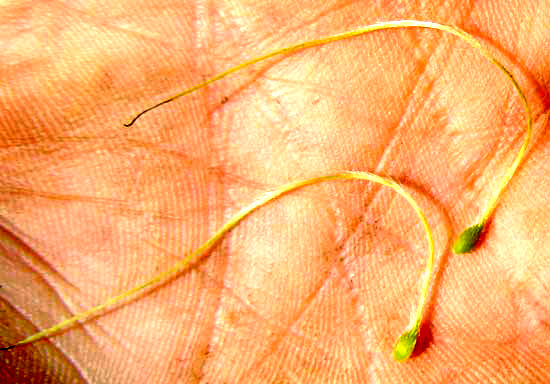Excerpts from Jim Conrad's
Naturalist Newsletter
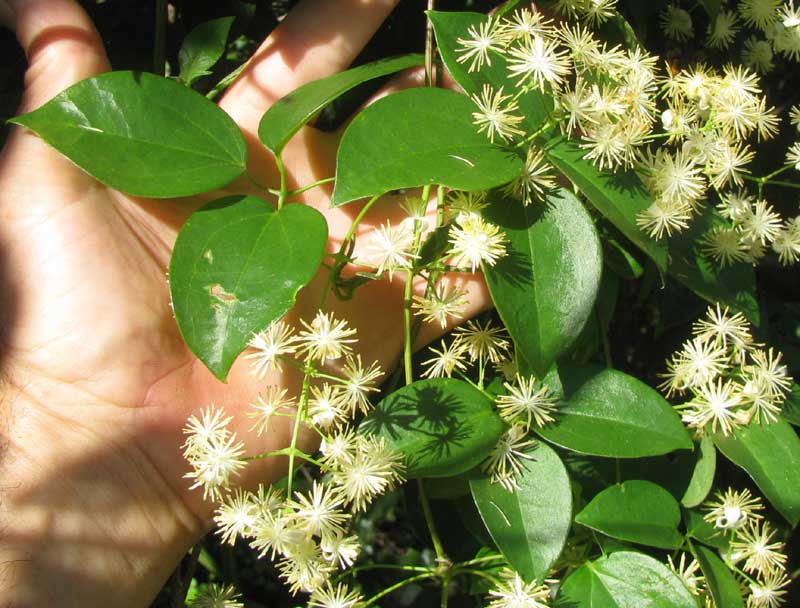
from the December 18, 2011 Newsletter issued from Hacienda Chichen Resort beside Chichén Itzá Ruins; limestone bedrock; elevation ~39m (~128ft), N20.675°, W88.569°; central Yucatán state, MÉXICO
"WHITE CLEMATIS"
Especially at roadside woods edges nowadays here and there you see a white-flowered vine overtopping weedy vegetation and often climbing high into trees. Its dense masses of smallish, white flowers with attendant glossy-green leaves spectacularly blanket areas the size of houses. You can see some flowers and leaves above.
The leaves are trifoliate -- compound leaves divided into three oval leaflets. In the picture at the top, left, notice how three leaflets join at their stems, or "petiolules," atop a petiole connecting to the stem. A close-up of a flower can be seen below:
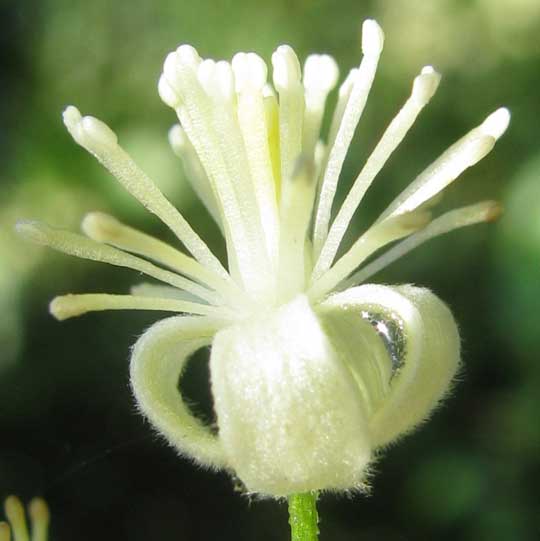
The fuzzy, downward-curving things are sepals. The white, matchstick-like items are pollen-producing stamens. In their center you can barely see a pistil's neck, or style. Several vestigial female pistils are hidden among the stamen bases. I refer to "vestigial" pistils because the vines have either functionally male or female flowers. The flower in the picture has robust stamens but insubstantial pistils, so it's functionally male. Something else curious about this blossom is that there's no sign of a corolla.
The lack of a corolla, the numerous stamens, the several vestigial pistils, and the trifoliate leaves, all combine to form good fieldmarks pointing to the fact that what we have here is a clematis vine. Most clematis flowers bear both male and female parts, but this species produces separate functionally male and functionally female plants; the plants are "dioecious."
In fact, this is CLEMATIS DIOICA, its name celebrating its dioeciousness. The species is fairly common throughout tropical America, including the Caribbean.
Clematises are generally known as leather flowers, virgin's-bowers, or just clematises. I can't find any good English name for this one, so I think of it simply as White Clematis. Like other clematises, after flowering this species forms conspicuous, fluffy fruiting heads which once, I read, were gathered for stuffing pillows and cushions.
The vine seems to have captured the imagination of Mexicans, who variously call it Barbas de Viejo (Old Man's Whiskers), Barbas de Chivo (Goat's Whiskers), Cabeza de Viejo (Old Man's Head), Pelo de Angel (Angel Hair), Nube (Cloud), Pestañas de Tecolote (Owl's Eyelashes), and other Spanish names. In Maya it's Meexmuxab. Throughout the Americas it must have hundreds of names!
One reason for its multitudinous names may be that traditionally the vine has been used medicinally in many ways, especially for skin and tooth problems. Also coughs, hemorrhoids, and kidney ailments. And certain livestock diseases. Well, the uses go on and on, though the online Atlas de las Plantas de la Medicina Tradicional Mexicana says that no scientific studies have substantiated its usefulness for anything.
from the January 31, 2016 Newsletter issued from Hacienda Chichen Resort beside Chichén Itzá Ruins, central Yucatán MÉXICO
WHITE CLEMATIS FRUITING
Nowadays White Clematis's vines are conspicuous along roadsides because of their pale, fuzzy-looking fruiting heads, shown below:
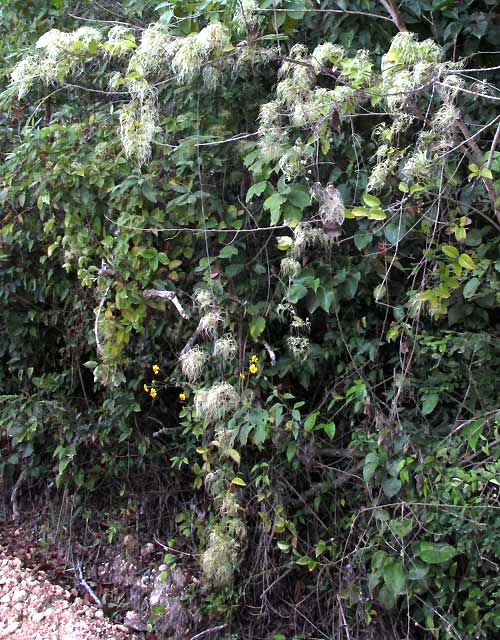
A close-up of several heads blown to one side by the wind can be seen below:
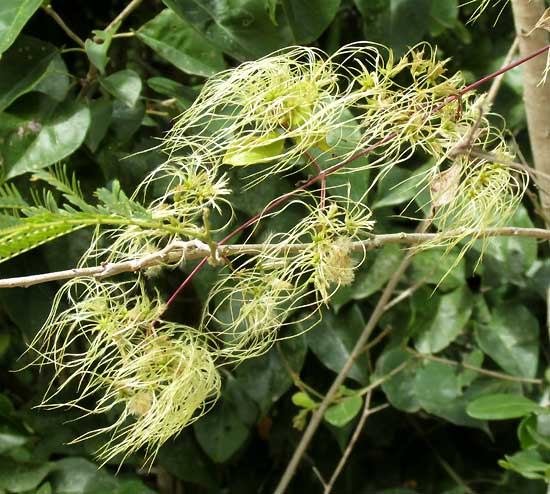
That blown-to-one-side effect is typical of the clematises. You might compare the above picture with that of a different clematis species on a fence back in Texas at www.backyardnature.net/n/13/130728cp.jpg.
The puffball-like affairs are not fruits, but rather clusters or heads of fruits. Each clematis flower bears several pistils and each pistil develops into an achene-type fruit, each with a "tail." You can see two such tailed fruits below:
